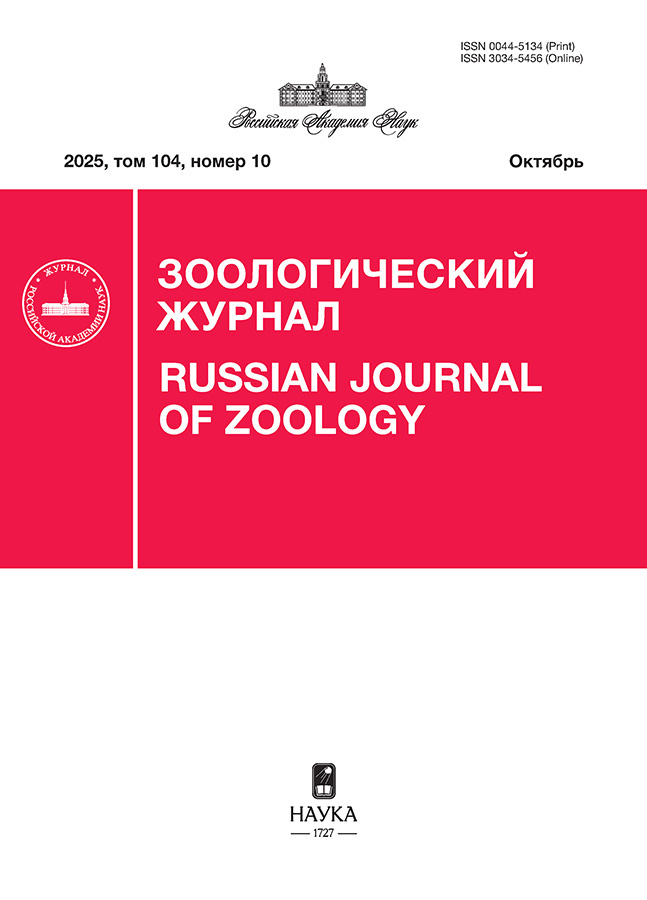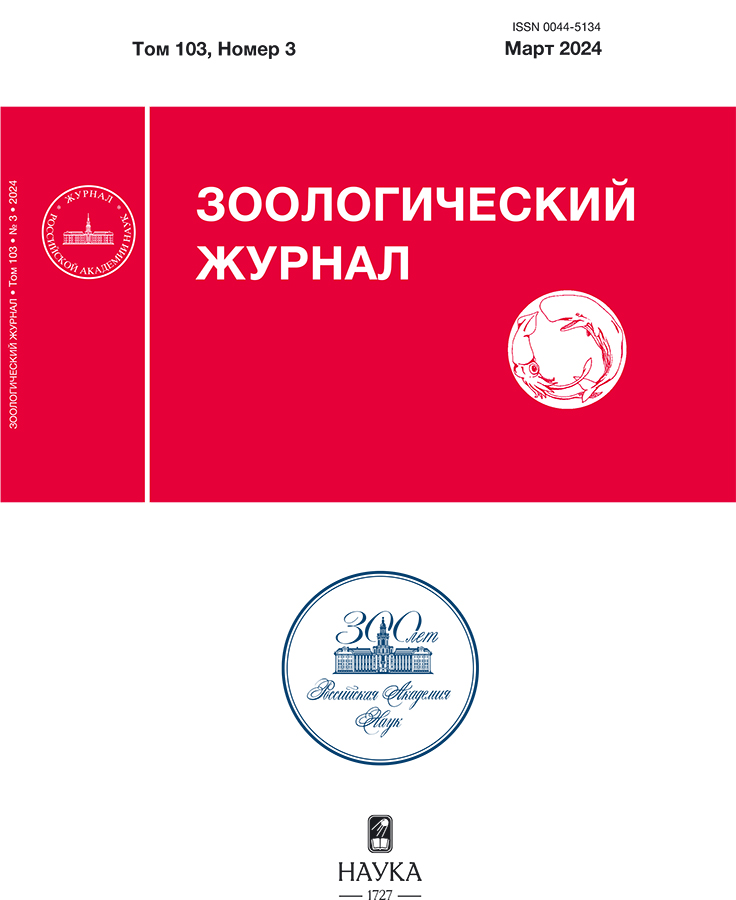Переходит ли бабочка-крапивница (Aglais urticae, lepidoptera, nymphalidae) к синантропии на северо-востоке Азии
- Авторы: Берман Д.И.1
-
Учреждения:
- Институт биологических проблем Севера ДВО РАН
- Выпуск: Том 103, № 3 (2024)
- Страницы: 52-58
- Раздел: Статьи
- URL: https://rjdentistry.com/0044-5134/article/view/654306
- DOI: https://doi.org/10.31857/S0044513424030062
- EDN: https://elibrary.ru/VCEZFQ
- ID: 654306
Цитировать
Полный текст
Аннотация
Проверено предположение о переходе бабочки-крапивницы (Aglais urticae) к синантропии в экстремально холодных (с минимальными температурами, близкими к –60оC) регионах. У крапивницы зимует имаго; холодостойкость бабочек принципиально недостаточна для переживания холодов на большей части ареала в природных убежищах, расположенных выше уровня снега, и в легких строениях. Средние температуры переохлаждения вида от Англии к северо-востоку России увеличиваются от –22 до –29оC, тогда как средние минимальные температуры воздуха в январе падают с 3.3 до –55.7оC. Выяснялось, обеспечивают ли на северо-востоке Азии (пос. Сеймчан) добротные зимние, но неотапливаемые дома температуру в помещениях выше –30оC, пороговую для крапивницы. В двух разных по устройству домах зимой логгерами измерялись температуры и сравнивались с данными метеостанции. В жестокие холода в домах было на 11–19оC теплее, чем вне их, однако минимумы температур ниже –30оC регистрировались в течение половины зимы, а ниже –35оC – в течение почти ее трети. Таким образом, неотапливаемые зимние дома и природные убежища (типа щелей под корой, дупел и других полостей), находящихся выше уровня снежного покрова, не обеспечивают необходимых температур. Дома, подобные изученным, гарантируют крапивнице успешную гибернацию в климатически более мягких условиях Западной Сибири и северо-востока европейской части России. Зимовка же выше уровня снега в примитивных убежищах возможна только в пределах и западнее области температур –31…–20оC. Проведенная работа делает еще менее обоснованными представления о синантропии крапивницы и возвращает нас к предположению о пребывании ее под снежным покровом в убежищах типа полостей в опаде, под упавшими деревьями и т.д. Подобный тип зимовки гарантирует успех, не будучи зависим от климатов Северной Евразии.
Полный текст
Об авторах
Д. И. Берман
Институт биологических проблем Севера ДВО РАН
Автор, ответственный за переписку.
Email: dberman@mail.ru
Россия, Магадан, 685000
Список литературы
- Агроклиматический атлас мира, 1972. Ред. И.А. Гольц- берг. М.: ГУГК; Л.: Гидрометеоиздат. 146 с.
- Научно-прикладной справочник по климату СССР, 1990. Л.: Гидрометеоиздат. Сер. 3. Вып. 33. Ч. 1–6. 566 с.
- Паньков Н.Н., Старова О.С., 2013. Беспозвоночные пещер Пермского края // Пещеры: сб. науч. трудов. Естественнонауч. ин-т Перм. гос. нац. иссл. ун-та. Пермь. Вып. 36. С. 103–111.
- Справочник по климату СССР, 1966. Вып. 33. Ч. II. Л.: Гидрометеоиздат. 288 с.
- Справочник по климату СССР, 1968. Вып. 33. Ч. IV. Л.: Гидрометеоиздат. 258 с.
- Bale J.S., Hayward S.A.L., 2010. Insect overwintering in a changing climate // Journal of Experimental Biology. V. 213. № 6. P. 980–994.
- Bird J.M., Hodkinson I.D., 1999. Species at the edge of their range: The significance of the thermal environment for the distribution of congeneric Craspedolepta species (Sternorrhncha: Psylloidea) living on Chamerion angustifolium (Onagraceae) // European Journal of Entomology. V. 96. P. 103–109.
- Dvorak L., Belicek J., Fric Z., 2009. Observations of overwintering nymphalid butterflies in underground shelters in SW and W Bohemia (Czech Republic) (Lepidoptera: Nymphalidae: Nymphalini) // Journal of Research on the Lepidoptera. V. 41. P. 45–52.
- Kalushkov P., Nedved O., 2000. Cold hardiness of Pyrrho- coris apterus (Heteroptera: Pyrrhocoridae) from central and southern Europe // European Journal of Entomology. V. 97. P. 149–153.
- Lewington R., 2016. Pocket Guide to the Butterflies of Great Britain and Ireland; Bloomsbury Publishing: Oxford, UK. 144 p.
- Meshcheryakova E.N., Berman D.I., 2014. Cold hardiness and geographic distribution of earthworms (Oligochaeta, Lumbricidae, Moniligastridae) // Entomological Review. V. 94. P. 486–497.
- Meshcheryakova E.N., Bulakhova N.A., 2014. Cold resistance of three species of earthworms (Oligohaeta, Lumbricidae) inWestern Siberia // International Journal of Environmental Studies. V. 71. № 5. P. 749–754.
- Meshcheryakova E.N., Bulakhova N.A., Zhigulskaya Z.A., Shekhovtsov S.V., Berman D.I., 2023. Wintering and Cold Hardiness of the Small Tortoiseshell Aglais urticae (Linnaeus, 1758) (Nymphalidae, Lepidoptera) in the West and East of the Northern Palearctic // Diversity. V. 15. № 1. 72. P. 1–14.
- Poulton E., 1936. Aglais urticae L. with symmetrical injuries possibly inflicted before hibernation, flying in house, 30 march, 1936, St. Helens, isle of wight // In Proceedings of the Royal Entomological Society of London. Series A, General Entomology; Blackwell Publishing Ltd.: Oxford, UK. V. 11. P. 98.
- Rasmussen L.M., Holmstrup M., 2002. Geographic variation of freeze-tolerance in the earthworm Dendrobaena octaedra // Journal of Comparative Physiology B. V. 172. P. 691–698.
- Ring R.A., Tesar D., 1981. Adaptations to cold in Canadian arctic insects // Cryobiology. V. 18. № 1. P. 199–211.
- Strouhal H., Vornatscher J., 1975. Katalog der rezenten Höhlentiere Österreichs // Annalen des Na- turhistorischen Museums in Wien. V. 79. P. 401– 542.
- Wiklund C., Vallin A., Friberg M., Jakobsson S., 2008. Rodent predation on hibernating peacock and small tortoiseshell butterflies // Behavioral Ecology and Sociobiology. V. 62. P. 379–389.
Дополнительные файлы















